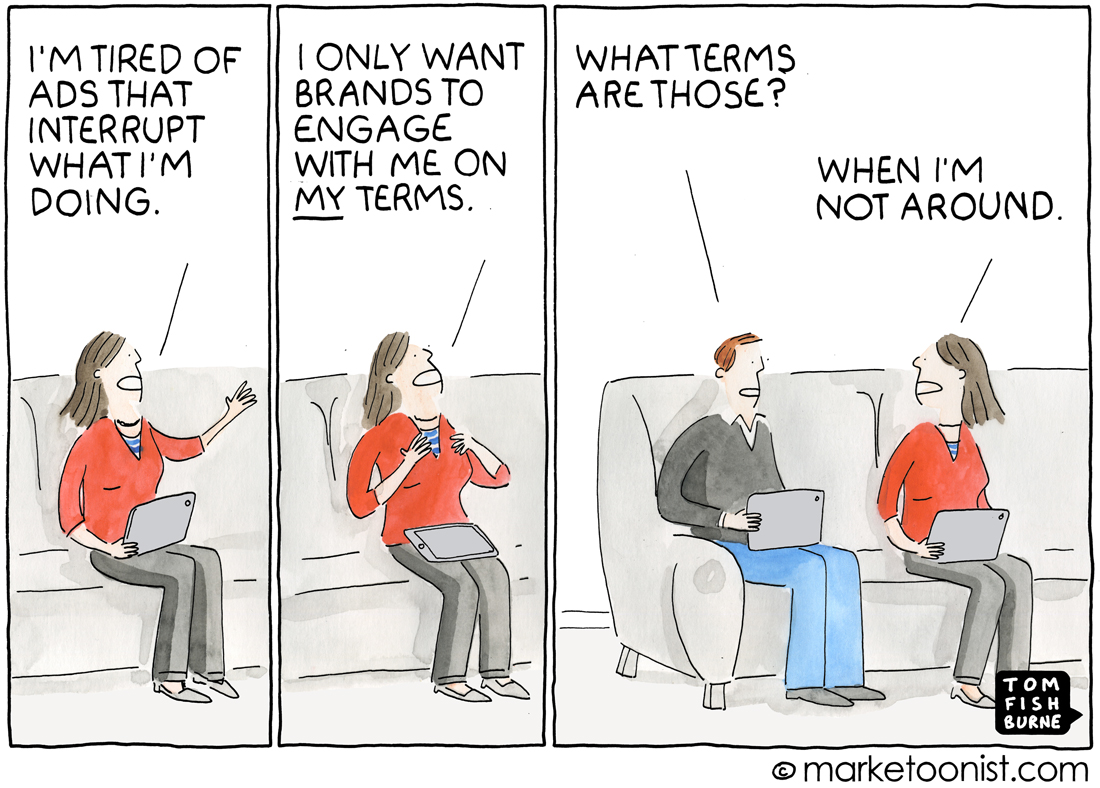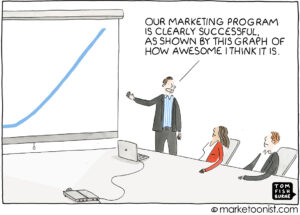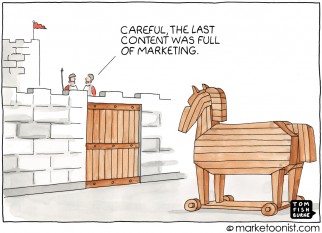“People don’t want to be interrupted by advertising. They want to engage with it on their own terms, when they’re in consumer mode and thus in the proper mindset to listen to a brand’s messaging.”
I read this takeaway in a Guardian article on the death of the 30-second spot, comparing it to the eight-track of advertising. But I wonder when people are ever really “in consumer mode?” What are the consumers’ “own terms” that would make them want to listen to a brand’s messaging?
“The modern consumer no longer has the patience to sit through a four-minute pod of eight 30-second sales pitches.”
The 30-second TV spot may be outmoded, but it’s not just the tactic that is out of touch. As shown by the rise of ad blockers, consumers are just as resistant to digital ads. While the ad tech arms race has given marketers increasingly powerful tools to interrupt consumers, consumers are increasingly able to tune out or ignore whatever marketers are trying to say.
Interruptive advertising in another container is still interruptive advertising. So what’s the real alternative?
I think marketing is at an interesting inflection point figuring out the answer to that question. There is a lot of experimentation in native advertising right now, aiming to create branded content so engaging that it’s not seen as interruptive at all.
From it’s roots in digital publishing, native advertising is jumping to network television. Cable programmer Turner introduced a new native advertising unit at CES in January, stating “the idea is to turn Turner into a giant native ad platform.” They offer to shift from a block of 30-second spots to long-form branded content that’s two to three minutes long.
This experimentation with native advertising will continue, sometimes ruffling feathers, as this classic John Oliver rant shows:
I’d love to hear your thoughts on the future of advertising.



Bernie Weiss says
If people liked receiving advertising, advertisers wouldn’t need to trick people into seeing it… which is what native ads seek to do.
Marek says
I’d say it is a cause-effect reason. Ads contents are way beyond a real features and hold only a fiction. It is human nature to resist when you get too much lies in one day, so they do.
Patrick says
Great piece as always, especially about the death of the 30ss TVC! My take though is that consumers will prefer shorter, to-the-point, but entertaining content versus the “we now interrupt your regularly scheduled program with this even longer piece of hidden brand centric communication”. Experimentation is good & essential, but as marketers, we need to take more courage in experimentation. The rise of the 6ss – 14ss videos speaks to how people may prefer to ‘snack’ on content, versus still being pre-disposed to longer executions.
Ori Pomerantz says
We are saturated with marketing. If you want our valuable attention, give us something back.
I do that for IBM, I write articles that teach how to write certain types of Web applications (http://www.ibm.com/developerworks/library/se-bluemix-self-posting-app-mean-stack-part1/index.html). Those articles sit on an IBM site, and when people find them, typically through a search engine, they also learn about IBM’s services that help them run such applications.
If your customers already know everything they need to know about your product category, then you need to provide something else. I am not sure what – entertainment would work, but it is an extremely competitive market. To market to teenagers, maybe branded videos that help them learn what the teachers at school are supposed to teach them.
Anthony Giallourakis says
Advertising needs to shift from push to pull modalities. This holds true not just for digital advertising, but for all forms.
The advent of the Internet and smart mobile communications is reformatting the consumer. The consumer has come to expect a greater level of interactivity in everything they engage with. It is therefore inevitable that advertising must follow.
Advertising must become inviting and pull consumers into sustainable exchanges of values. These exchanges will drive soon-to-be familiar templates of ongoing bilateral interaction, all at natural pause times for the consumer.
The real key to the pull advertising shift is for advertisers to discover how to balance out what they receive in exchange for what they offer. In real interactive exchanges of value, consumers will be very willing to provide valuable input to advertisers, if what they receive is sufficiently engaging.
Native advertising forms are just the tip of the pull advertising evolution. Advertisers have injected new value in the form of information or entertainment, but there is still too little interactivity to create sustained exchanges with the consumer.
There are still many interesting ways advertising can and will evolve to pull forms with greater interactivity, higher exchanges of values, more rewarding engagement, and higher ultimate ROI’s for the buyers.
David Sealey says
Despite our dislike for advertising, some ads have enjoyed great viral success. Volkswagen’s the Force adverts are one example of how great advertising doesn’t need to be pushed, people go and find it!